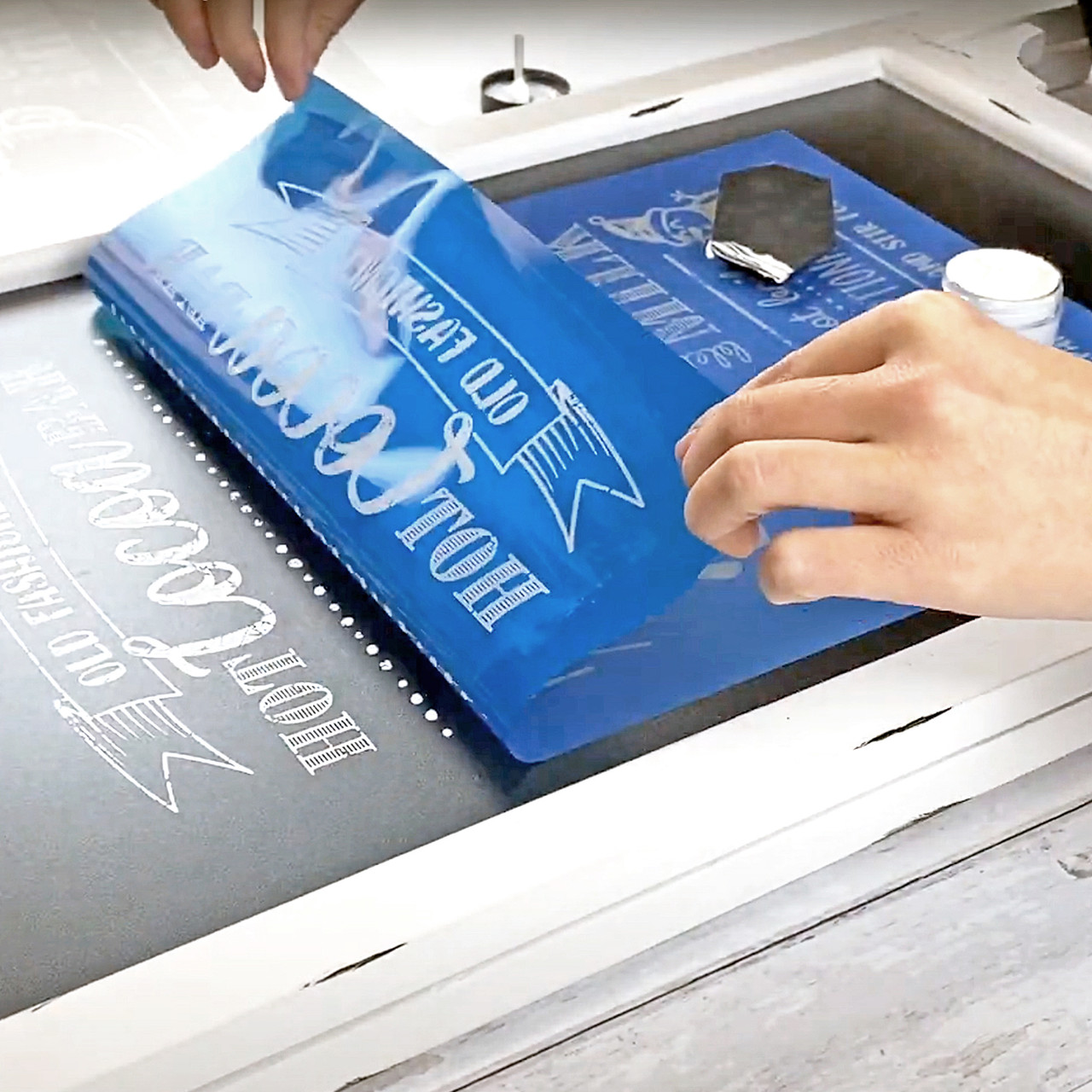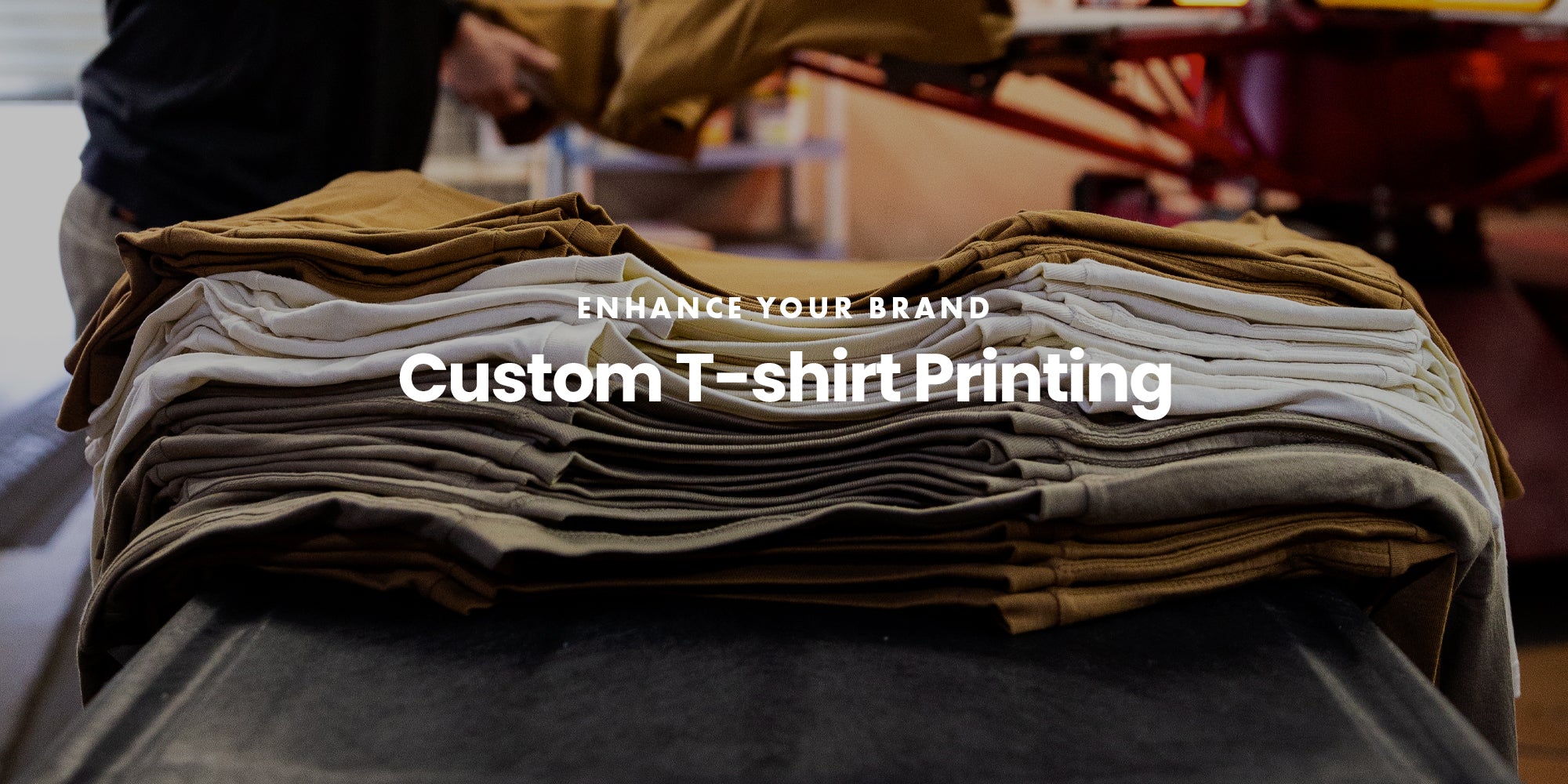Artistic Silk Screen Printing for Limited Edition Prints
Artistic Silk Screen Printing for Limited Edition Prints
Blog Article
Screen Printing Uncovered: Every Little Thing You Required to Know Regarding T-Shirt and Garment Printing Methods
If you have actually ever questioned just how those dynamic layouts wind up on your favored t-shirts, you remain in the right area. Display printing is an interesting method that combines art with strategy, providing unlimited possibilities for creative thinking. Recognizing the fundamentals, from equipment to ink selections, can significantly influence your results. Ready to discover the essential elements that make display publishing an art type? Let's reveal the information that can elevate your projects.
The Fundamentals of Screen Printing: Just How It Functions
When you plunge right into screen printing, you'll discover it's both a scientific research and an art. At its core, screen printing includes developing a pattern, or display, that permits ink to go through only in specific areas (screen printing kit). You begin by picking your style and preparing your screen with a light-sensitive emulsion. As soon as you expose this emulsion to light, it solidifies, leaving your layout as an adverse room.
Placement the display over the material, after that use a squeegee to press ink with the screen onto the garment. Each step is crucial, and grasping them will certainly raise your display printing skills, changing basic garments right into special, meaningful items.
Sorts Of Display Printing Methods
Once you comprehend the fundamentals of screen printing, it's time to check out the numerous techniques that can raise your styles. One prominent technique is standard screen printing, where ink is pushed via a stenciled screen. This technique is terrific for bold, dynamic colors. There's water-based ink printing, which offers a softer feeling and is eco-friendly, but it requires a various technique to curing.
Another alternative is plastisol printing, known for its durability and vivid shades, making it a favorite for several brand names. Experiment with halftone printing to create gradient results and detailed styles.
Necessary Equipment for Screen Printing
To achieve sensational outcomes in display printing, having the appropriate tools is basic. Initially, you'll need a sturdy screen printing structure, which holds the mesh that moves your style onto the garment. Next off, spend in high-quality squeegees; these are vital for using ink equally across the screen. You'll likewise call for a great direct exposure system to develop your screens, in addition to a washout cubicle for cleansing them after usage. A trustworthy warm resource, like a conveyor dryer or heat press, is crucial for treating your prints to guarantee durability. Don't neglect a proper workspace, geared up with tables and storage space for your supplies. Ultimately, protective equipment, such as gloves and masks, will certainly maintain you safe from chemicals and inks. With the right tools, you'll be well on your means to producing professional-quality prints.
Picking the Right Inks and Materials
When choosing inks and products for display printing, you require to take right into account the sort of ink that works best for your project. Think of textile compatibility to ensure your designs look last and wonderful long. Additionally, check out environmentally friendly ink options to make your printing process more lasting.
Kinds Of Display Inks
Picking the ideal display ink is necessary for attaining vivid, long lasting prints that satisfy your project's demands. There are several kinds of display inks to examine. Specialized inks, such as metal or glow-in-the-dark, can include unique effects to your styles.

Textile Compatibility Factors To Consider
Recognizing textile compatibility is crucial for accomplishing top quality display prints, especially given that various materials respond distinctly to numerous inks. When picking inks, think about the fabric kind-- cotton, polyester, or blends. For cotton, water-based inks function well, supplying softness and breathability. Polyester, on the other hand, frequently requires plastisol inks for much better bond and dynamic colors. You might require to make use of a mix of both types if you're publishing on blends. Constantly evaluate your inks on example textile to ensure they stick effectively and maintain shade honesty. In addition, remember that material weight and appearance can impact the last end result, so selecting the best ink and product combo is crucial for your task's success.
Eco-Friendly Ink Options
Eco-friendly inks are coming to be a preferred option for screen printers that intend to minimize their environmental effect while preserving top quality. When choosing inks, take into consideration water-based inks, which are much less damaging and easier to cleanse up compared to conventional solvents. These inks bond well with fabrics, providing lively outcomes without hazardous chemicals. You could likewise check out eco-solvent inks that utilize fewer volatile natural substances (VOCs), making them a more secure choice for both your wellness and the world.
Furthermore, search for inks made from sustainable resources, such as soy or vegetable-based options. By choosing the right inks and products, you'll not just develop spectacular styles yet also add to an extra sustainable printing process. Make the button, and your prints will certainly show your dedication to the environment!
Preparing Your Layout for Display Printing

File Layout Needs
To ensure your layout looks lively and sharp on material, you'll need to pay very close attention to submit style needs for display printing. Start with vector files like AI or EPS, as they can be scaled without shedding high quality. If you use raster pictures, choose high-resolution data, such as TIFF or PNG, ideally at 300 DPI. Avoid using JPEGs, as they can lose quality when resized. Additionally, make certain your style has a transparent history to avoid undesirable white sides on your prints. Maintain color settings in mind; CMYK is basic for display printing, so transform your RGB makes accordingly - screen printing kit. By adhering to these guidelines, you'll set your art work up for a successful print.
Color Separation Strategies
Shade splitting up is an important action in preparing your style for display printing, and grasping it can substantially enhance your print quality. You'll require to break your style right into specific shades, as each shade requires a different screen throughout printing. Begin by identifying all the shades in your layout and create layers each. You can use software like Adobe Photoshop or Illustrator to isolate and different colors effectively. Be certain to save each layer as a different data, typically in a format like TIFF or PSD. This accuracy not only guarantees accurate shade depiction however likewise simplifies the printing process. By paying attention to shade separation, you'll accomplish professional and dynamic outcomes in your screen-printed garments.
Resolution and Dimension
Accomplishing the most effective results in display printing begins with ensuring your design has the right resolution and size. Ideally, your art work must be at least 300 DPI (dots per inch) for sharp, clear prints. Your final product may look pixelated and unprofessional. if you use lower resolution.
When it concerns dimension, take into consideration the dimensions of your print area. Layout your artwork to match the final print dimension, ideally creating it in the actual measurements you'll be printing. By doing this, you'll avoid any unanticipated scaling issues.
Always examine your design in both vector and raster layouts. Vector graphics can be scaled without shedding quality, making them ideal for display printing. Preparing correctly will assure your design looks amazing on every garment!
Step-by-Step Display Printing Process
Display printing is a dynamic procedure that permits you to produce vibrant designs on different surface areas. To obtain started, you'll need a display, solution, and your selected ink.
Put ink onto the display and utilize a squeegee to press the ink through the stencil onto the textile. Raise the display meticulously and let the print completely dry. You've effectively display published your layout.
Tips for Effective Screen Printing Projects
While you're diving right into your display printing jobs, keep in mind that prep work is key to success. Beginning by gathering all your products-- inks, squeegees, screens, and garments. A tidy workspace assists avoid undesirable errors, so neat up before you start.
Following, validate your art work is high-resolution and appropriately sized for your garment. Evaluate your screen for proper exposure and tidy it extensively to avoid smudges. When blending your inks, comply with the manufacturer's standards to accomplish the appropriate uniformity.
Throughout printing, use even pressure with your squeegee for regular results. Do not rush; take your time to validate each print satisfies your requirements. After printing, let your garments dry completely prior to handling or packaging them.
Lastly, constantly keep a sample of your help future reference. In this manner, you can evaluate your progress and boost your strategies gradually. Satisfied printing!

Regularly Asked Concerns
How much time Does It Require To Establish a Screen Printing Task?
Establishing a screen printing job commonly takes around 30 mins to an hour. You'll prepare the screens, mix inks, and change journalism. The time differs based upon garment printing intricacy and experience, so stay arranged!
Can I Print on Various Fabric Keys In Making Use Of the Very Same Method?
Yes, you can print on different material types using the very same strategy, however you'll need to change your settings and inks. Some fabrics absorb ink differently, so exploring guarantees the most effective results for each and every product.
What Are Usual Blunders to Prevent in Display Printing?
When screen printing, avoid usual mistakes like utilizing the wrong ink, neglecting correct direct exposure times, or missing pre-press checks. Always test your setup and maintain tidy displays to ensure top quality results each time.
Exactly How Can I Properly Clean and Preserve My Display Printing Equipment?
To correctly tidy and keep your screen printing tools, you ought to routinely clean screens with suitable solvents, check mops for wear, and guarantee all devices are saved dust-free and dry. Consistency enhances and protects against pricey repairs performance.
Is Screen Printing Eco-friendly Compared to Various Other Methods?
Screen printing can be more eco-friendly than various other methods, specifically if you use eco-conscious products and water-based inks. By picking lasting materials and practices, you reduce waste and reduce your effect on the world.
Screen Printing Uncovered: Every Little Thing You Need to Know About Tee and Garment Printing Techniques
At its core, display printing entails creating a stencil, or display, that allows ink to pass via only in particular locations. Setting the display over the material, then use a squeegee to press ink via the display onto the garment. One preferred approach is traditional screen printing, where ink is pushed with a stenciled display.When picking inks and products for screen printing, you need to take right into account the kind of ink that works best for your task.
Report this page